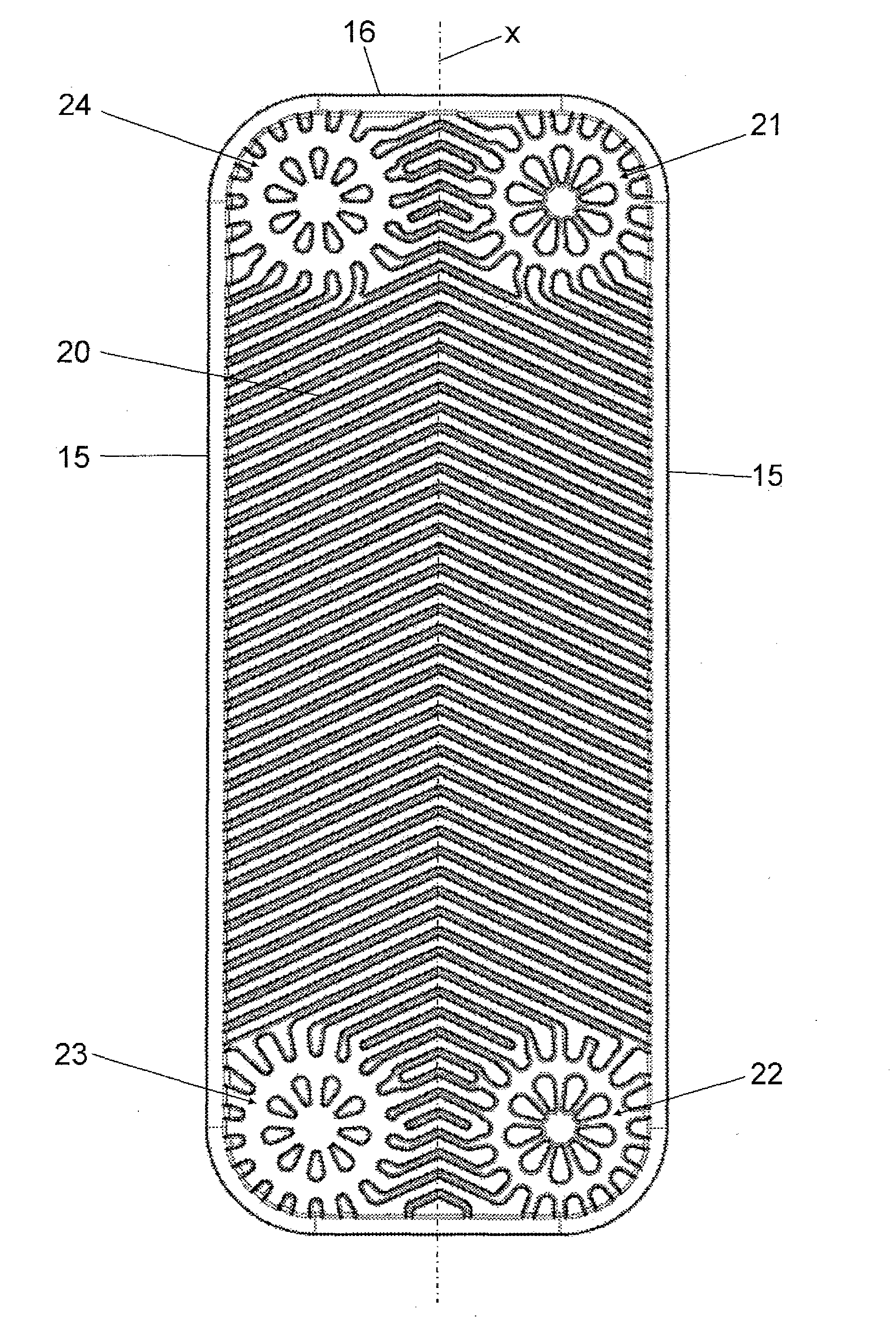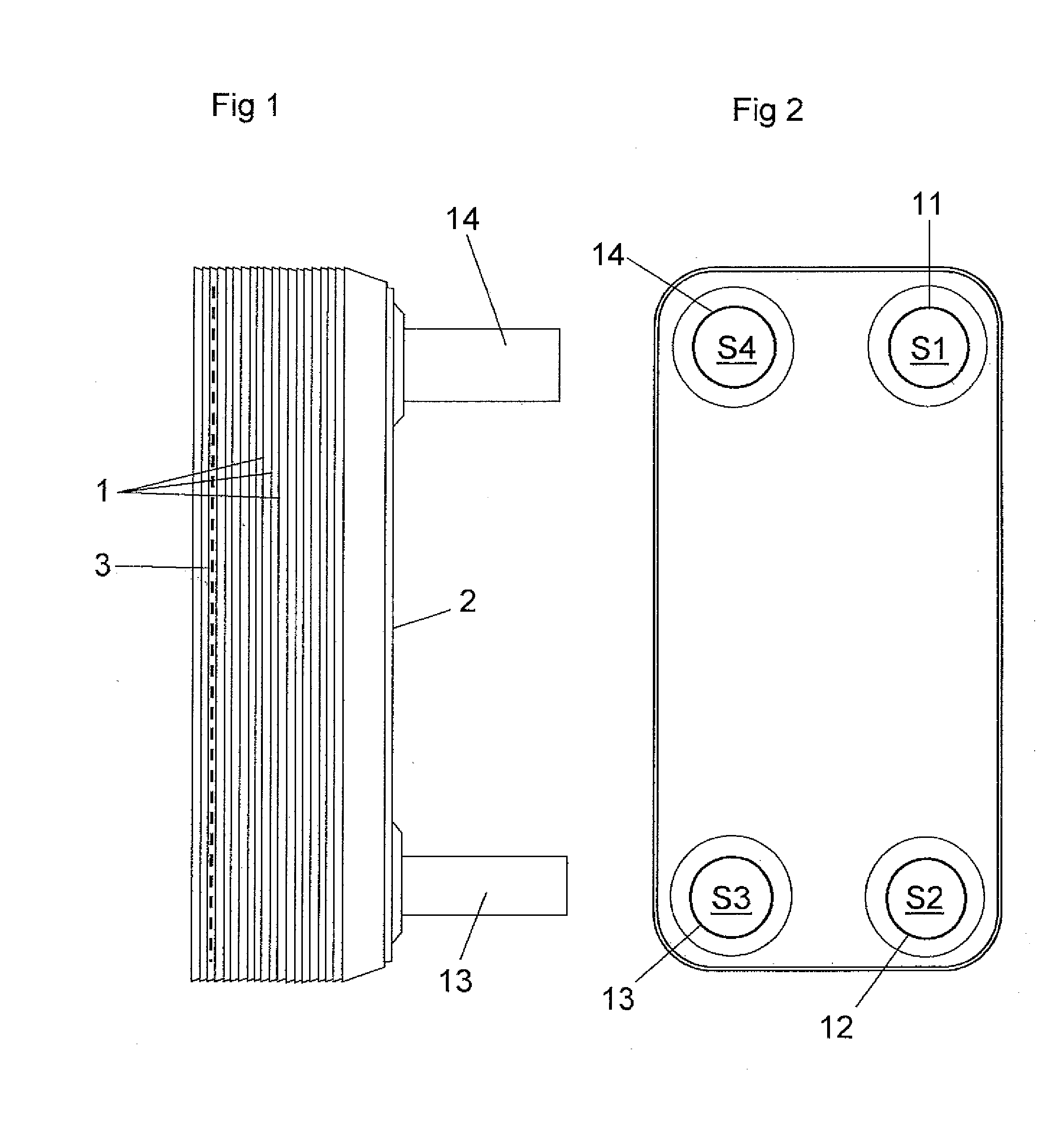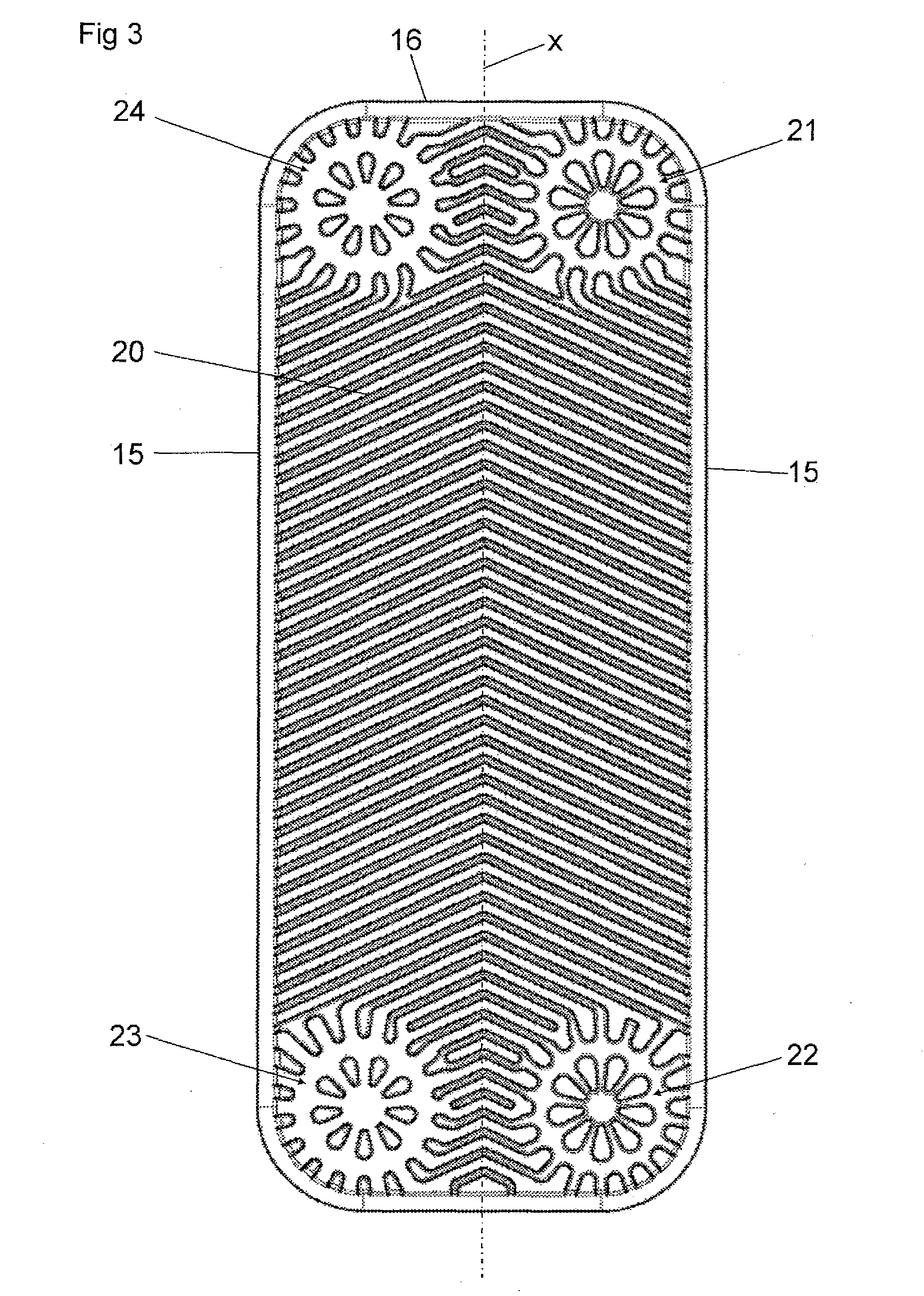Plate Heat Exchanger
a heat exchanger and plate technology, applied in the direction of heat exchanger fastening, lighting and heating apparatus, reinforcement means, etc., can solve the problems of small distance between the contact area or joining area of adjacent heat exchanger plates in the plate package, and the distance between them will be relatively short, so as to improve the strength of the joining and increase the strength of the plate package. , the effect of high strength
- Summary
- Abstract
- Description
- Claims
- Application Information
AI Technical Summary
Benefits of technology
Problems solved by technology
Method used
Image
Examples
Embodiment Construction
[0027]FIGS. 1 and 2 shows a plate heat exchanger comprising a plurality of heat exchanger plates 1, a first end plate 2, which is provided beside an outermost one of the heat exchanger plates 1, and a second end plate 3, which is provided beside the other opposite outermost heat exchanger plate 1.
[0028]The heat exchanger plates 1 are produced through forming of a metal sheet and provided beside each other. The first end plate 2, the second end plate 3 and the heat exchanger plates 1 are permanently joined to each other through brazing by means of a braze material to form a plate package. The plate package define or have first plate interspaces 4 for a first medium and second plate interspaces 5 for a second medium, see FIG. 6. The first and second medium may be any suitable heat transfer medium. For instance, the first and / or the second medium may be carbon dioxide.
[0029]The plate heat exchanger of the embodiments disclosed has four portholes S1, S2, S3 and S4, wherein the porthole ...
PUM
 Login to View More
Login to View More Abstract
Description
Claims
Application Information
 Login to View More
Login to View More - R&D
- Intellectual Property
- Life Sciences
- Materials
- Tech Scout
- Unparalleled Data Quality
- Higher Quality Content
- 60% Fewer Hallucinations
Browse by: Latest US Patents, China's latest patents, Technical Efficacy Thesaurus, Application Domain, Technology Topic, Popular Technical Reports.
© 2025 PatSnap. All rights reserved.Legal|Privacy policy|Modern Slavery Act Transparency Statement|Sitemap|About US| Contact US: help@patsnap.com



